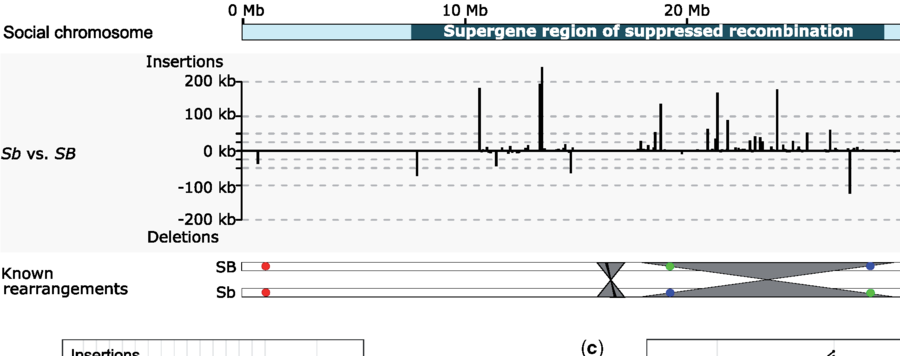
Degenerative expansion of a young supergene
Long-term suppression of recombination ultimately leads to gene loss, as demonstrated by the depauperate Y and W chromosomes of long-established pairs of XY and ZW chromosomes. The young social supergene of the Solenopsis invicta red fire ant provides a powerful system to examine the effects of suppressed recombination over a shorter timescale. The two variants of this supergene are carried by a pair of heteromorphic chromosomes, referred to as the social B and social b (SB and Sb) chromosomes. The Sb variant of this supergene changes colony social organization and has an inheritance pattern similar to a Y or W chromosome because it is unable to recombine. We used high-resolution optical mapping, k-mer distribution analysis, and quantification of repetitive elements on haploid ants carrying alternate variants of this young supergene region. We find that instead of shrinking, the Sb variant of the supergene has increased in length by more than 30%. Surprisingly, only a portion of this length increase is due to consistent increases in the frequency of particular classes of repetitive elements. Instead, haplotypes of this supergene variant differ dramatically in the amounts of other repetitive elements, indicating that the accumulation of repetitive elements is a heterogeneous and dynamic process. This is the first comprehensive demonstration of degenerative expansion in an animal and shows that it occurs through nonlinear processes during the early evolution of a region of suppressed recombination.






